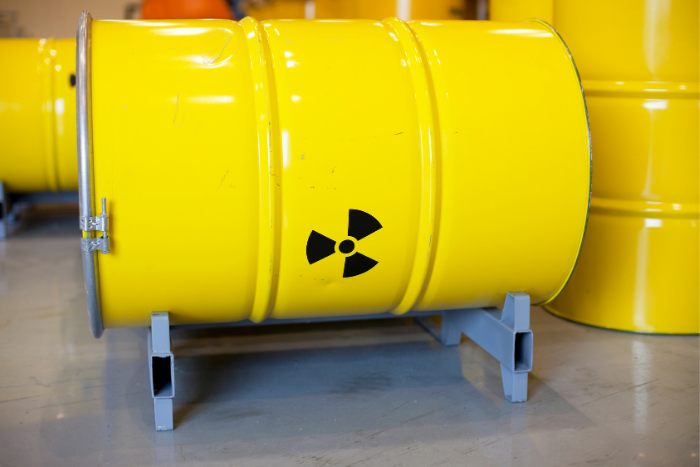The World Nuclear Association (WNA) informs us of the proper steps to be taken to manage radioactive waste to protect people and the environment. According to the WNA:
- Nuclear Power is the only large-scale energy-producing technology that takes full responsibility for its wastes and fully costs this into the product.
- Compared to the number of wastes produced by fossil fuel electricity generation the amount of radioactive waste created is relatively small.
- Nuclear fuel that has been used is either treated as a resource or simply as waste.
- Nuclear Wastes are not quite as hazardous or difficult to manage in comparison to other toxic industrial wastes.
- Disposal of high-level radioactive wastes in safe methods are technically proven; the international consensus is that this should be geological disposal.
There are different types of radioactive wastes that range from very low-level waste to high-level waste, wastes produced by mining and milling, and wastes created from conversion, enrichment, and fuel fabrication. Radioactive waste is produced by electricity generation as well.
Radioactive wastes are produced in all parts of the nuclear fuel cycle. At each stage of the fuel cycle, there are proven technologies to dispose of radioactive wastes safely.
“Unlike other industrial wastes, the level of hazard of all nuclear waste—its radioactivity—diminishes with time. Each radionuclide contained in the waste has a half-life—the time taken for half of its atoms to decay and thus for it to lose half of its radioactivity. Radionuclides with long half-lives tend to be alpha and beta emitters—making their handling easier—while those with short half-lives tend to emit the more penetrating gamma rays. Eventually, all radioactive wastes decay into non-radioactive elements. The more radioactive an isotope is, the faster it decays.”
The objective of radioactive waste management is to protect people and the environment. Isolating or diluting the waste so that the rate or concentration of any radionuclides returned to the biosphere is harmless will ensure the safety of individuals and the atmosphere.
All toxic wastes need to be taken care of with safety, not just radioactive wastes. In countries with nuclear power, radioactive wastes comprise less than 1% of total industrial toxic wastes (the balance of which remains hazardous indefinitely).
“Each year, nuclear power generation facilities worldwide produce about 200,000 m3 of low- and intermediate-level radioactive waste and about 10,000 m3 of high-level waste including used fuel designated waste.”
It is important to take safety precautions to deal with radioactive wastes to shield the people and preserve our environment.
So here at MediRay, we make lead products that can provide protection from radioactive wastes. We have products such as storage and waste containers that will help keep radioactive wastes in control. If you need storage containers to keep radioactive wastes away from harming people and the environment do not hesitate to contact MediRay to get great products for the storage of radioactive wastes. MediRay puts a lot of research, and time into the development of their products, so you will defiantly not be disappointed. To speak to a MediRay consultant about products call 877-898-3003.



